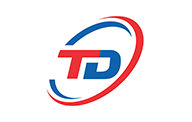













| Our design process involves the following process: | ||||||||||||||||||||||||||||||||||||||||||||||||||||||||||||||
1. Specifying your design requirements : The client must provide us with details regarding the design requirement (technically known as “design specifications” or “specs”).The specifications must include as much details regarding the design requirements as possible. Some clients may require a confidential non-disclosure agreement to be signed to enable them to disclose the details of the design. We welcome such agreements, given that, they are fair and acceptable. It would be ideal if the client can provide as much details about the design needed as possible. We understand not all clients have a sound knowledge about the technical details involving the design. In such cases, we can convert their requirements in plain English into technical specifications. We sometimes, also suggest improvements/amendments to the design by which it can be made even better or by which the manufacturing/ design costs can be decreased even further. |
||||||||||||||||||||||||||||||||||||||||||||||||||||||||||||||
2. Providing a price quote for the design : After studying the design specifications we will analyze the amount of work involved, number of engineers to engage on the design, resources needed, estimated completion time etc. Then we will get back to you with a price quote for the design. after the client accepts the price quote and places the order for the design, we will begin the actual design process. |
||||||||||||||||||||||||||||||||||||||||||||||||||||||||||||||
| 3. Design process flow : Following is the brief work flow of our design process. | ||||||||||||||||||||||||||||||||||||||||||||||||||||||||||||||
|
||||||||||||||||||||||||||||||||||||||||||||||||||||||||||||||
5. Final changes/modifications to the design (optional): After the prototype is examined by the client, on rare occasions, they may find it necessary to make a few changes are small and does not involve any hardware changes & if the can be achieved through a simple firmware upgrade, then it will be done without any extra costs. For more elaborate changes that requires the hardware/PCB etc to be re-designed or if it takes a long time to implement the changes to the firmware, it will be charged appropriately. Normally, most of the designs that we do satisfy the specifications or exceed it, so most of the times, this step will not be necessary. |
[ Home ] [ About us ] [ Our Expertises ] [ Design Process ] [ products ] [ feedback ] [ Contact us ] |